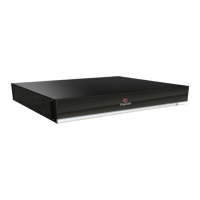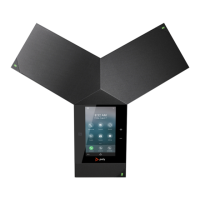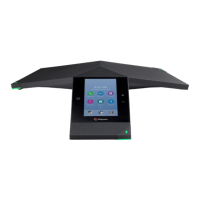The telnet port is locked regardless of how you configure it. A telnet session disconnects after five failed
login attempts. If a new session starts, the system allows another five.
Procedure
1. In the system web interface, select Admin Settings > Security > Global Security > Access.
The SSH port settings are visible only when Enable Legacy API Over SSH is enabled.
2. Configure the following settings and select Save.
Setting Description
Lock SSH Port after Failed Logins The number of failed login attempts allowed before the
SSH/Telnet interface locks. You can set this to Off.
SSH Port Lock Duration Specifies the amount of time that the web interface
remains locked due to failed login attempts. When this
period expires, the failed login attempts counter resets
and you can try to log in again.
Reset SSH Port Lock Counter After Specifies the number of hours, starting with the first
failed login attempt, during which subsequent failed
login attempts are counted against the maximum
number allowed (Lock SSH Port after Failed Logins).
The counter resets when the set period of time expires
or a user successfully logs in.
Lock Port after Failed Logins The number of failed login attempts allowed before the
web interface locks. You can set this to Off.
Whitelisting
Whitelisting allows access to your RealPresence Group Series system web interface and SNMP ports
only to IP addresses you specify.
A whitelist supports up to 30 addresses (including IPv4 and IPv6 formats) and can only be configured in
the system web interface.
Note: If your IP addresses are dynamically assigned, make sure the whitelist is updated so those hosts
can connect to your system.
Enable a Whitelist
Add or remove IP addresses on your system whitelist.
Procedure
1. In the system web interface, select Admin Settings > Security > Global Security > Access.
2. Select Enable Whitelist, then Edit Whitelist.
Related Links
Port Lockout on page 93
Securing the System
Polycom, Inc. 95

